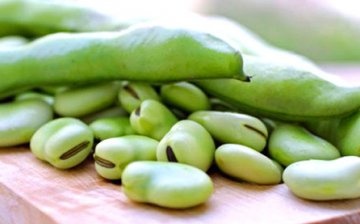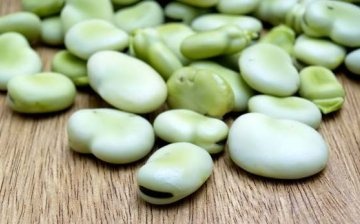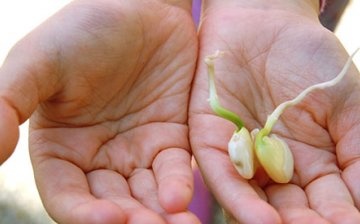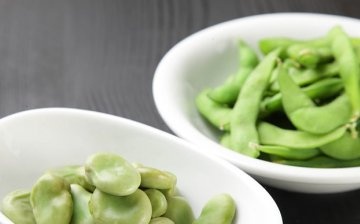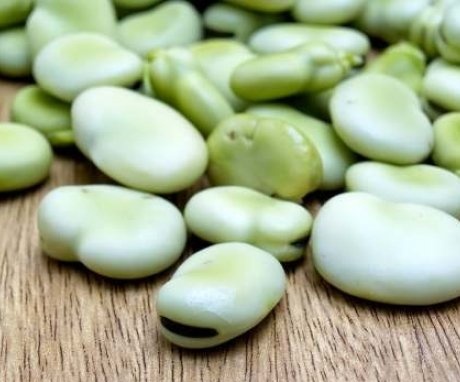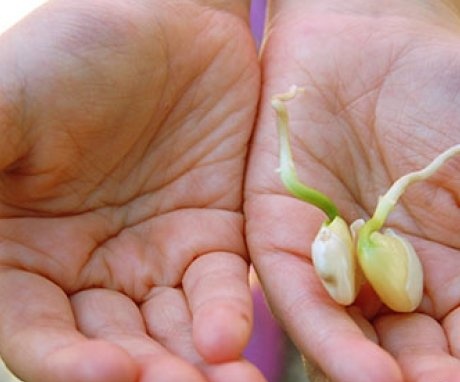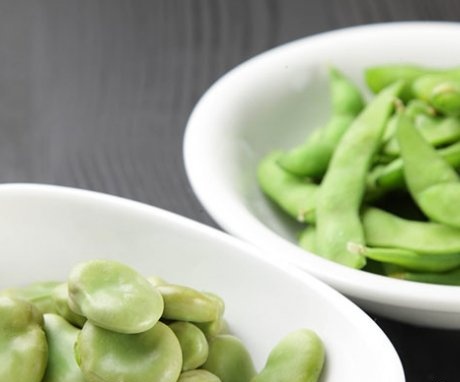Lima beans are the healthiest bean in your garden
Lima beans were seen by Europeans in the 16th century in Peru (South America). Now these beans are grown in many countries: China, India, Central and South America, Burma. Lima beans are prized for their taste and beneficial features.
Content
Lima beans: description
This beans has several names. The main thing - Lima - was given to her by the Peruvian city of Lima. The form in the form of an incomplete moon makes it possible to call it lunar.
It is an annual plant. Best of all, lima beans grow and bear fruit in the tropics and subtropics. In recent years, due to climate warming, they began to grow it in the Krasnodar Territory, the Caucasus, in the south of Ukraine. There are examples that it can grow and give a good harvest in the central regions. But until now, lima beans have not received the proper distribution there.
Lima Bean Forms:
- Bush
- Curly, reaches 15 m.
The leaves are trifoliate, shiny, with a waxy bloom. The size is medium. Small inconspicuous flowers are arranged in brushes of 20-30 pieces per inflorescence. In color, they are white with a greenish tinge or purple. Self-pollinated lima beans. Therefore, the harvest does not depend on the presence of bees or other insects nearby.
The flat broad beans are the fruit of the lima beans.
They can be straight, sword or saber shaped. The length of one is from 7 to 20 cm. The color of young beans is green. After ripening, they become light brown, brown or remain green. Inside there are up to 4 seeds with grooves on a thin peel.
Seeds are:
- Kidney-shaped
- In the form of a sphere
- Moonlike.
Seeds can be white, red, orange, black, with white spots and stripes.
Varieties:
- Armenian
- Small-grain bush
- Sugar (white seeds)
- Pale-variegated (late variety)
The seeds of these beans can be very large or small (early ripening), depending on the variety. The weight of a thousand grains ranges from 0.2 g to 1.5 kg.
Growing
Beans love warmth more than any traditional crop. And lima beans are even more thermophilic than other types. She does not tolerate even small frosts. But he doesn't like heat above 25 ° C either. Air humidity during the growing season should be moderate. If it's too dry, the buds fall off. But lima beans do not like strong soil moisture. It reacts especially badly to stagnant moisture in the upper layers of the soil. Therefore, it is better to sow it on light soils with good aeration. Grows well in neutral or slightly acidic soil. Predecessors - potato and other nightshades, cucumbers... On heavy soils, beans ripen more slowly than on light soils.
It also grows on other types of soils, including clay, mountain, stony. You just need to supply it with organic matter: compost, potash and phosphorus fertilizers... Nitrogen usually does not need to be introduced, because the beans themselves are able to create them and fill the soil with them. Very poor soils can be an exception.
Lima beans are sown after the threat of recurrent frosts has passed. Soil temperature should be 15 ° C. If it is lower, then the seeds will rot.
The seeding pattern depends on the shape of the plant:
- For bush varieties, the distance between plants is up to 20 cm, and the row spacing is up to 60 cm.
- Curly ones are placed even wider: up to 90 cm between rows and up to 30 cm in rows.
- You can use a square-nesting scheme with a distance between plants of 50 or 70 cm.
Seeds they are embedded to a depth of 3 to 6 cm. Depending on the variety and seeding scheme, up to 250 g of seeds are used per hundred square meters. If the temperature is threatened, the area is covered with non-woven material.
The seeds germinate together. They germinate best at 25 ° C. Seedlings appear in a week. After the appearance of the first true leaf, they are spud. This will help the plants withstand strong gusts of wind. After all, it is sown finely, therefore it requires additional support.
Further care consists in weeding, removing weeds, feeding, regular watering.
Twice a season the soil is loosened between the rows. If the beans grow poorly, they are fertilized with superphosphate and ammonium nitrate (10 g per 1 m2). Curly varieties must be directed upwards. This is done with a trellis or stakes hammered near each of the plants. Planting can be used corn, which becomes a natural support for beans... For normal development and fruiting, she needs a lot of sunlight. Therefore, it should be placed only along the edges of the planting. If corn is used as props, then one bean seed is sown on 2 of its grains.
Lima beans are short-day plants. In order for the beans to be larger, top dressing is carried out with an infusion of wood ash. Pour it with boiling water in a ratio of 1: 1, insist under the lid. For watering, the resulting infusion is diluted in a ratio of 1:10. The ripening period of the lima bean fruit is extended over time. Therefore, the harvest is carried out in several stages. The seeds should be in a milky state, at the beginning of waxy maturity. To check the readiness of the seeds, you need to pierce the skin. If this is difficult, the beans are overripe and taste worse.
Ripe beans of early ripening varieties begin to be harvested in 70 days, late ones - 90 days after germination. Fruiting lasts two months. Lima bean plants live up to 125 days. Lima beans are quite resistant to diseases... Perhaps this is due to the strong smell of its leaves.
Beneficial features
Lima beans are a low-calorie product. In 100 g, only 113 kcal. It contains more protein than other types of beans, 6.8 g. It is absorbed by 75%. Fats up to 2 g, carbohydrates 15.3 g. Beans contain a large amount of vitamins (beta-carotene, PP, A, C, group B, E, K choline), phosphorus, magnesium, potassium, calcium, sodium, selenium, iron, copper.
Scientists have compared the benefits to the human body from the consumption of lima beans and beef. It turned out that in the first one there are twice as many useful substances.
Useful properties of lima beans:
- Strengthens muscles.
- Helps cleanse the stomach.
- Increases immunity with agglutins.
- Suppresses pathogenic bacteria.
- Improves intestinal microflora.
- Fights heartburn in its raw form.
- Prevents the formation of malignant tumors in the intestines.
- Reduces blood cholesterol levels.
- Strengthens blood vessels.
- Normalizes blood circulation.
- It has an antioxidant effect.
- Used as an anti-inflammatory agent.
- Lima bean dishes will help athletes quickly recuperate after the competition.
- Used for weight loss.
- Bean flour is used in cosmetology to create nourishing masks.
Lima beans have a butter flavor, which is why they got the name "butter". Use fresh and dried. It is boiled, mashed, stewed, added to the first courses. Bean flour is used to bake bread.
There are also contraindications - Lima beans should not be used by people with urolithiasis and a tendency to flatulence.
Its glycemic index (a measure of blood sugar) is higher than that of other legumes. Therefore, it is not suitable for diabetics. The oily taste makes it feel satisfying, and the low calorie content allows you not to gain weight.
More information can be found in the video.



